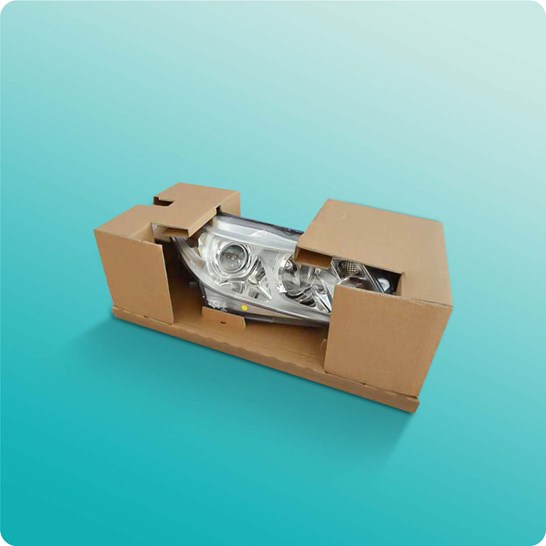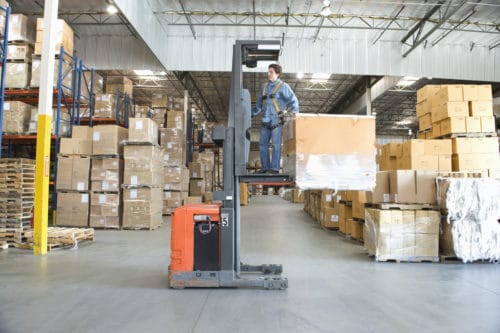Optimum Protection: Industrial Packaging Solutions Tailored for Success
Optimum Protection: Industrial Packaging Solutions Tailored for Success
Blog Article
Efficient Industrial Recycling Solutions for Sustainable Packaging: A Comprehensive Overview
In today's progressively environmentally-conscious world, the need for lasting product packaging services has actually never been greater. To fulfill this need, services throughout industries are proactively looking for reliable industrial recycling services. However, navigating the complex landscape of lasting product packaging can be testing without an extensive guide. That's where this extensive overview on effective industrial recycling solutions for lasting packaging comes in. By exploring key areas such as packaging material selection, developing for recyclability, implementing recycling facilities, collaborating with reusing companions, and monitoring and measuring recycling success, this guide will certainly furnish you with the understanding and tools needed to make educated decisions and drive favorable adjustment within your organization. Whether you're a product packaging specialist, sustainability manager, or simply curious about the subject, this guide will certainly supply valuable insights and approaches to aid you navigate the globe of sustainable product packaging.
Product Packaging Material Choice
The option of product packaging products plays a critical function in making certain the sustainability of commercial recycling solutions. When it concerns lasting product packaging, the selection of products is vital in minimizing environmental influence and making the most of recycling efficiency. Choosing the appropriate materials can aid reduce waste generation, preserve sources, and promote a circular economy.
One important variable to take into consideration in product packaging material option is recyclability - industrial metal packaging. Products that can be quickly reused and included back into the production cycle are favored. Materials like cardboard, paper, glass, and certain types of plastics can be recycled several times without losing their top quality. On the various other hand, materials that are challenging to reuse, such as non-recyclable composites or mixed plastics, can develop difficulties for the reusing process and might wind up in landfills or incinerators.
Another factor to consider is using eco-friendly and naturally degradable materials. Product packaging made from renewable resources, such as plant-based plastics or biopolymers, can help reduce reliance on fossil gas and minimize climate change. Additionally, naturally degradable materials damage down naturally with time, reducing the buildup of waste in garbage dumps.
Moreover, the weight and quantity of packaging materials should be lessened to lower transport costs and power usage. Light-weight products not only call for less resources throughout manufacturing yet also add to lower carbon emissions throughout transportation.
Designing for Recyclability
In order to ensure the recyclability of packaging products, thoughtful layout is vital. Creating for recyclability entails developing product packaging that can be quickly sorted, separated, and processed in reusing centers. One crucial aspect of making for recyclability is the option of products. Packaging developers ought to prioritize the usage of products that are extensively approved for reusing and have actually established reusing facilities. Products such as glass, aluminum, and particular types of plastic, like family pet and HDPE, are commonly recycled and must be liked over products that are pricey or tough to recycle.
Another important factor to consider in making for recyclability is the elimination of unnecessary components or materials. By reducing the number of layers, coatings, and added elements, product packaging can be made simpler and less complicated to recycle. Additionally, developers should aim to minimize using combined materials, as they can complicate the recycling procedure.

Implementing Recycling Framework
Efficient implementation of reusing infrastructure is vital for the success of industrial recycling services. Without proper infrastructure in location, the recycling procedure ends up being inefficient and inefficient, preventing the overall goal of sustainable product packaging.
To carry out recycling framework properly, a number of vital elements require to be considered. Firstly, there ought to be an efficient collection system that helps with the splitting up and collection of recyclable products. This can consist of assigned reusing bins in public areas, as well as collaborations with waste monitoring business for curbside pickup and sorting.
When collected, the recyclable materials require to be transferred to recycling facilities in a prompt way. This needs efficient logistics and transport networks, making sure that the materials reach the suitable facilities without hold-up.
At the recycling facilities, progressed sorting and processing technologies ought to be in place to divide various sorts of products properly. This includes the use of automated arranging machines, optical scanners, and hand-operated sorting strategies.
Furthermore, there ought to be a durable market demand for recycled products. This can be achieved via partnerships with producers and industries that use recycled products in their production procedures. Producing a secure market for recycled products incentivizes the reusing sector and promotes the circular economic situation.
Working Together With Recycling Partners

One trick aspect of collaborating with reusing partners is the establishment of clear communication networks. It is necessary to develop open lines of interaction to help with the exchange of details, updates, and comments. This allows both events to remain notified regarding the progression of reusing campaigns and address any difficulties or issues that might emerge.
Additionally, collaboration can include collaborations in creating and carrying out recycling programs. Recycling companions can offer important understandings and assistance in establishing efficient collection systems and determining the most appropriate recycling innovations. By collaborating, companies and recycling companions can enhance the reusing process and lessen waste.
Moreover, collaboration can expand past the operational elements of recycling. It can additionally include advocacy and education and learning campaigns. By signing up with pressures, organizations and recycling companions can increase recognition about the value of recycling and advertise the fostering of sustainable product packaging methods amongst consumers and various other stakeholders.
Tracking and Measuring Recycling Success
To guarantee the effectiveness of commercial recycling options and the success of sustainable product packaging objectives, it is essential for organizations and their recycling companions to establish a comprehensive system for tracking and measuring reusing success (plastic container manufacturer). Tracking and measuring recycling success enables organizations to examine the impact of their recycling initiatives, identify areas for improvement, and set significant targets for future development
One means to track recycling success is via using information collection and analysis devices. By collecting data on the amount of packaging waste produced, the portion of waste that is reused, and the kinds of products being reused, businesses can get important insights into their reusing performance. This information can after that be evaluated to recognize trends, patterns, and locations of inadequacy.
Another crucial element of monitoring and measuring reusing success is developing standard and clear metrics. This enables businesses to contrast their efficiency versus sector criteria and track their progression gradually. Metrics such as recycling prices, waste diversion prices, and greenhouse gas discharges can provide a quantitative action of an informative post organization's recycling success.

Final Thought
To conclude, executing reliable industrial recycling remedies for lasting packaging needs mindful factor to consider of product packaging material selection, creating for recyclability, carrying out reusing framework, teaming up with recycling partners, and tracking and determining recycling success. By integrating these methods, businesses can add to an extra lasting and environmentally-friendly strategy to packaging, lowering waste and promoting the circular economic situation.
By discovering essential locations such as product packaging material option, making for recyclability, implementing recycling facilities, teaming up with reusing partners, and monitoring and gauging recycling success, this overview will equip you with the understanding and devices necessary to make informed decisions and drive positive change within your organization. Packaging designers should focus on the use of products that are commonly approved for recycling and have actually established recycling facilities.Collaboration with recycling partners is vital for the effective implementation of industrial recycling remedies and the accomplishment of sustainable product packaging objectives. By joining forces, companies and reusing companions can elevate recognition concerning the importance of recycling and advertise the fostering of lasting packaging practices among customers and various other stakeholders.
By collecting data on the quantity of packaging waste produced, the percent of waste that is reused, and the kinds of materials being recycled, organizations can get valuable insights into their reusing performance.
Report this page